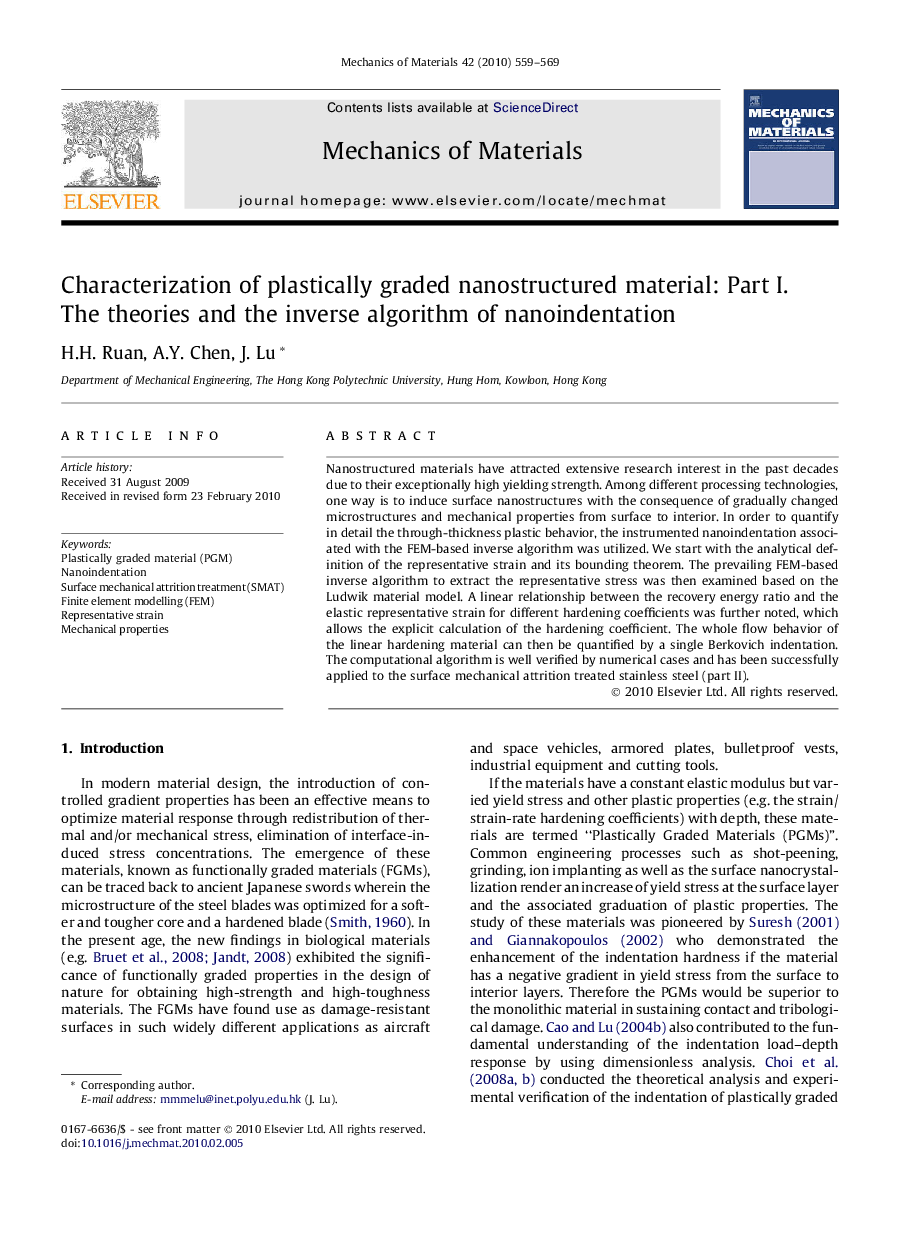| Article ID | Journal | Published Year | Pages | File Type |
|---|---|---|---|---|
| 800866 | Mechanics of Materials | 2010 | 11 Pages |
Nanostructured materials have attracted extensive research interest in the past decades due to their exceptionally high yielding strength. Among different processing technologies, one way is to induce surface nanostructures with the consequence of gradually changed microstructures and mechanical properties from surface to interior. In order to quantify in detail the through-thickness plastic behavior, the instrumented nanoindentation associated with the FEM-based inverse algorithm was utilized. We start with the analytical definition of the representative strain and its bounding theorem. The prevailing FEM-based inverse algorithm to extract the representative stress was then examined based on the Ludwik material model. A linear relationship between the recovery energy ratio and the elastic representative strain for different hardening coefficients was further noted, which allows the explicit calculation of the hardening coefficient. The whole flow behavior of the linear hardening material can then be quantified by a single Berkovich indentation. The computational algorithm is well verified by numerical cases and has been successfully applied to the surface mechanical attrition treated stainless steel (part II).
